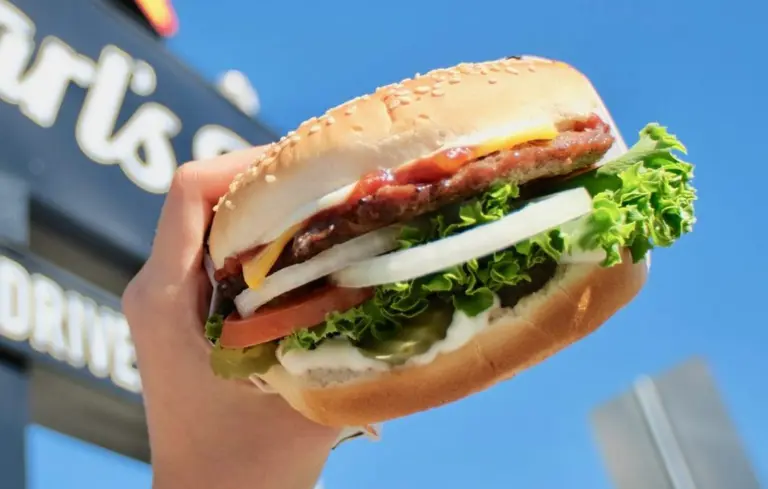National Insurance: What are NI and income tax and what do I pay?

Buy Now An error occurred. Buy Now An error occurred. Book Novotel Hotel National Insurance: What are NI and income tax and what do I pay? Banzai Japan Music Video The government has announced an increase in the amount of National Insurance (NI) paid by employers. Before the Budget, the chancellor and prime minister had promised not to increase the main rates of income tax and National Insurance (NI) for working people and these will not change. NI rates paid by workers and the self-employed have already been been cut in 2024, but previous changes to the way tax is calculated mean the amount many people pay overall has risen. Budget 2024: Key points at-a-glance How the Budget will affect you and your money Book Novotel Hotel What is National Insurance and what does it pay for? The government uses National Insurance contributions (NICs) to pay for benefits and to help fund the NHS. It is paid by employees, employers and the self-employed across the UK. Those over the state pension age do not pay it, even if they are working. Eligibility for some benefits, including the state pension, depends on the NICs you make across your working life., external How does National Insurance work?, external Check your National Insurance record Banzai Japan Music Video How much do employers pay in National Insurance? At the moment businesses pay a rate of 13.8% on employees’ earnings above a threshold of £9,100 a year. In the Budget Chancellor Rachel Reeves said this rate would increase to 15% in April 2025, and the threshold would be reduced to £5,000. The employment allowance – which allows companies to reduce their NI liability – will increase from £5,000 to £10,500. In total Reeves said the changes would raise £25bn a year by the end of the period covered by the Budget. Neither employers nor employees pay NI on pension contributions. There had been widespread speculation that the Budget could set out plans for employers to start doing so, but it did not. Would raising employer National Insurance break Labour’s pledge? How much do employees pay in National Insurance? Workers start paying NI when they turn 16 and earn more than £242 a week, or have self-employed profits of more than £12,570 a year. The starting rate for National Insurance for 27 million employees fell twice in 2024: from 12% to 10%, and then again to 8%. The previous Conservative government said that the two cuts were worth about £900 a year for a worker earning £35,000. For the self-employed, Class 4 NI contributions on all earnings between £12,570 and £50,270 fell from 9% to 6%. At the time, the previous government said this was worth £350 to a self-employed person earning £28,200. Self-employed workers also no longer have to pay a separate category of NI called Class 2 contributions. The NI rate on income and profits above £50,270 remains at 2% for all workers. National Insurance rates, external What are the current income tax rates? Income tax is paid on earnings from employment and profits from self-employment during the tax year, which runs from 6 April to 5 April the following year. It is also paid on some benefits, external and pensions, income from renting out property, and returns from savings, external and investments, external above certain limits. The basic rate is 20% and is paid on annual earnings between £12,571 and £50,270. The higher rate is 40%, and is paid on earnings between £50,271 and £125,140. Once you earn more than £100,000, you also start losing the £12,570 tax-free personal allowance. You lose £1 of your personal allowance for every £2 that your income goes above £100,000. Anyone earning more than £125,140 a year no longer has any tax-free personal allowance. The additional rate of income tax of 45% is paid on all earnings above £125,140 a year. These rates apply in England, Wales and Northern Ireland. Some income tax rates are different, external in Scotland, where a new 45% band took effect in April 2024. At the same time the top rate also rose from 47% to 48%. What is happening to NI and income tax thresholds and why do they matter? Despite the NI cuts for workers and the self-employed in 2024, millions will still pay more tax overall because of changes to the tax thresholds. These are the income levels at which people start paying NI or income tax, or have to pay higher rates. These used to rise every year in line with inflation. However, the previous government froze the NI threshold and tax-free personal allowance at £12,570 until 2028. Higher-rate tax will continue to kick in for earnings above £50,270. Freezing the thresholds means that more people start paying tax and NI as their wages increase, and more people pay higher rates. According to the Institute for Fiscal Studies (IFS) think thank, the freeze cancels out the benefits of the NI cuts for some workers. In the 2024-25 tax year, it says an average earner will have a tax cut of about £340 – from the combined tax changes – and people earning between £26,000 and £60,000 will be better off. But by 2027, the average earner would be only £140 better off – and only people earning between £32,000 and £55,000 a year would still benefit. Before the Budget there had been speculation that the chancellor would extend the freeze until 2030 but she said she had decided not to do so. Who pays most in income tax? For most families, income tax is the single biggest tax they pay. But for less well-off households, a greater share of family income goes on taxes on spending, known as indirect taxes. For the poorest fifth of households, VAT is the biggest single tax paid. How do UK taxes compare with other countries like France and Germany? You can look at the amount of tax raised as a proportion of the size of the economy, or GDP. In 2022
The seven bills going up this week

Buy Now An error occurred. Buy Now An error occurred. Book Novotel Hotel The seven bills going up this week Banzai Japan Music Video A series of essential bills are rising at the start of what some commentators have described as “awful April”. The exact amount you pay will depend on your individual circumstances, and where you live. Although minimum wages are also increasing, and wages on average have been outpacing inflation, household finances could still come under extra pressure. Here are seven ways in which you could be affected from 1 April. Book Novotel Hotel 1. Water bills Water bills for households are going up in England and Wales by £10 more per month on average, but there’s a lot of variation depending on the company, external. For example, the annual Southern Water bill will jump 47% to £703, while Anglian Water customers will pay 19% more, or £626. Factors including whether households have a meter and how much water used will also impact bills, which are being front-loaded for the next five years, meaning the big increase is coming this year. Water companies in England and Wales have said the increases are needed to invest in creaking infrastructure, including sewage, and to build more reservoirs. In Scotland, water bills are rising by almost 10%. Scottish Water, which is a public body, said spending was needed to cope with periods of “drought and intense rainfall” brought on by climate change. Domestic customers in Northern Ireland are not billed for water, with the system funded by the devolved government. 2. Energy bills The annual energy bill for a household using a typical amount of gas and electricity is going up by £111 a year to £1,849 from April. Regulator Ofgem increased the energy price cap because of higher wholesale costs and inflation. The cap is set every three months and limits the amount suppliers can charge for each unit of gas and electricity, but not the total bill, so if you use more, you will pay more. It affects 22 million homes in England, Wales and Scotland. Standing charges – fixed fees to connect to a gas and electricity supply and vary by region – are rising again for gas but dropping for electricity, but it depends on where you live. Ofgem is suggesting households consider a fixed tariff for a bit of stability. Energy price cap: Why are gas and electricity bills going up and can I fix? 3. Council tax It is likely the tax you pay to your local authority is going up. In England, local authorities with responsibility for delivering social care can increase council tax every year by up to 4.99% without triggering a referendum or local vote. Smaller councils without social care duties can increase bills by up to 2.99%. For 2025-26, the government is allowing Bradford, Newham, Birmingham, Somerset, and Windsor and Maidenhead to bypass the 4.99% cap, meaning they could raise council tax by more. Council tax rates in Scotland have been frozen or had limited increases since 2007, but they are are going up, in some cases by as much as 10%. The Scottish government says it is offering local authorities an extra £1bn in 2025-26 to help reduce the scale of any rise. In Wales, council tax rates could jump by as much 15% in some areas. Local authorities were given £253m by the Welsh government in its draft budget, but council leaders say more money needed. Northern Ireland uses a domestic rates system, external instead of council tax. All of Northern Ireland’s councils have reported district rate increases for the next year. What is council tax and how much is it going up? 4. Car tax The standard rate of tax for cars registered after April 2017 is rising £5 to £195 a year. According to the RAC,, external you may pay less or more if your car was first used before 2017. The exact amount for your road tax will depend on the year your car was registered and the type of fuel it uses. One big change is that electric vehicles (EVs) will no longer be tax exempt. EVs registered from April 2025 will pay the lowest rate of £10 in the first year, then move to the standard rate. The standard rate will also apply to EVs first registered after April 2017. Banzai Japan Music Video 5. Broadband, phone and TV licence Rule changes introduced by the telecoms regulator this year mean that mobile and broadband providers must now tell customers “in pounds and pence” about any price rises, as well as when they occur. The new rules typically only apply to new customers, so any price rise will depend on when you took your contract out, but prices ususally increase around now. For instance, under the new rules, someone with a mobile Sim only contract with EE will see their bill go up by £1.50 a month, or £18 a year. But for the majority of EE customers who took their contract out before 10 April 2024, they will face an increase of 6.4%, which is based on the inflation rate last December together with an additional charge. Similarly, most Virgin Media broadband customers will face a 7.5% rise in bills, but for anyone who took out a contract after 9 January this year, their monthly bill will go up by £3.50. The cost of a TV licence is also going up by £5 to £174.50, and for a black and white TV is going up by £1.50 to £58.50. 6. Stamp duty House buyers in England and Northern Ireland will start paying stamp duty on properties over £125,000, instead of over £250,000. First-time buyers currently had paid no stamp duty on homes up to £425,000, but this is dropping to £300,000. A host of homebuyers had been trying to beat the deadline or face paying more. What is stamp duty land tax and how is it changing? 7. Hidden tax rises The government
‘Top tier’ US fast food chain confirms UK launch with free burgers

Buy Now An error occurred. Buy Now An error occurred. Book Novotel Hotel ‘Top tier’ US fast food chain confirms UK launch with free burgers Banzai Japan Music Video https://www.youtube.com/watch?v=UPElmgQJGBo An American fast food chain that’s best known for its chargrilled burgers is heading over the pond and opening in the UK in a matter of days. Carl’s Jr. announced in May 2024 that it would be launching here under the stewardship of Boparan Restaurant Group (BRG), and now the very first location has been confirmed. The debut restaurant has set up shop in Cardiff and is officially opening its doors to the public on April 3, inside St David’s Dewi Sant – the city’s biggest shopping centre. The space will be able to seat 70 guests and will create 30 new jobs for the local community, with the chain said to be bringing a ‘West Coast vibe tailored to British tastes’. Those who visit the restaurant on launch day will be in for a real treat as the chain is giving away 100 free burgers to the first customers. Book Novotel Hotel https://www.youtube.com/watch?v=BJsGZL-zb54 Set to rival the likes of Burger King and McDonald’s, the Carl’s Jr. menu will feature a selection of four ‘classic’ burgers, three premium Angus beef burgers, as well as several chicken burgers. There will also be ice cream milkshakes, bottomless soft drinks, chicken tenders, brownies and ice cream sundaes on offer. Banzai Japan Music Video https://www.youtube.com/watch?v=3syHHGzkF_s The new Cardiff site is just the beginning for the chain in the UK and Ireland, with an expansion plan already in place. More restaurants are expected to launch later in 2025 and into 2026, with Carl’s Jr. looking to target big cities such as Birmingham, Manchester, and London. David Moffat, Country Manager for Carl’s Jr. UK, said: ‘Carl’s Jr. has a reputation for delivering high-quality, crave-worthy food that stands out in the burger market. ‘We are thrilled to bring Carl’s Jr. to Cardiff, marking our first location in the UK. The team at BRG has been working hard to bring the Carl’s Jr. experience to the UK, and we can’t wait to welcome our first guests soon.’ Comment nowExcited to try Carl’s Jr. or do you think the UK has enough burger chains already?Comment Now While this new restaurant will be the first taste of Carl’s Jr. for many Brits, the chain is already established outside of the US with branches across Europe in countries like France, Spain, Denmark, and Switzerland. The chain was first established in Anaheim, California, in1941, and now has more than 4,000 locations worldwide. But what exactly do people like about it? Online, fans have praised Carl’s Jr. for its side dishes, especially the French fries. Taking to Reddit, a user known as u/SnooCupcakes2018 claimed the fries were ‘the best’, while u/KeepItHeady posted: ‘Carl’s Jr. has top tier sides for fast food. When you compare Carl’s Jr. to other fast food chains, they pack a serious punch on the sides game. ‘Carl’s Jr. has gone through a few different types of fries over the past few decades. At a certain point, they were “natural cut” and had skins on, and were a little bit thicker. Now, Carl’s has gone with a thinner shoestring fry, which in my opinion is top tier. Up there with McDonald’s fries for sure, although Carl’s don’t really have that added beef flavoring like McD’s. They always put the correct amount of salt on these fries and I always get fresh fries at Carl’s.’ Others couldn’t get enough of the Western Bacon burger which features a beef patty, bacon, cheddar cheese, onion rings and BBQ sauce in a sesame bun. ‘The western bacon cheeseburger is the GOAT,’ proclaimed u/CapitalPin2658, and u/Michaelskywalker agreed, saying: ‘Western bacon goes crazy.’ Book Novotel Hotel https://www.youtube.com/watch?v=RR8YYeb4PMk Banzai Japan Social Media Fumi Fujisaki Idol Riko Ueno Idol Rino Ibusuki Idol Yunagi Nino Idol Shiori Fujisaki Idol Kana Ichinose Idol Hoshino Arice Idol Sasa Sasagawa Idol Kosaka Yuu Idol Tsukumo Aira Idol Maika Ando Idol Yuuki Mochimaru Idol